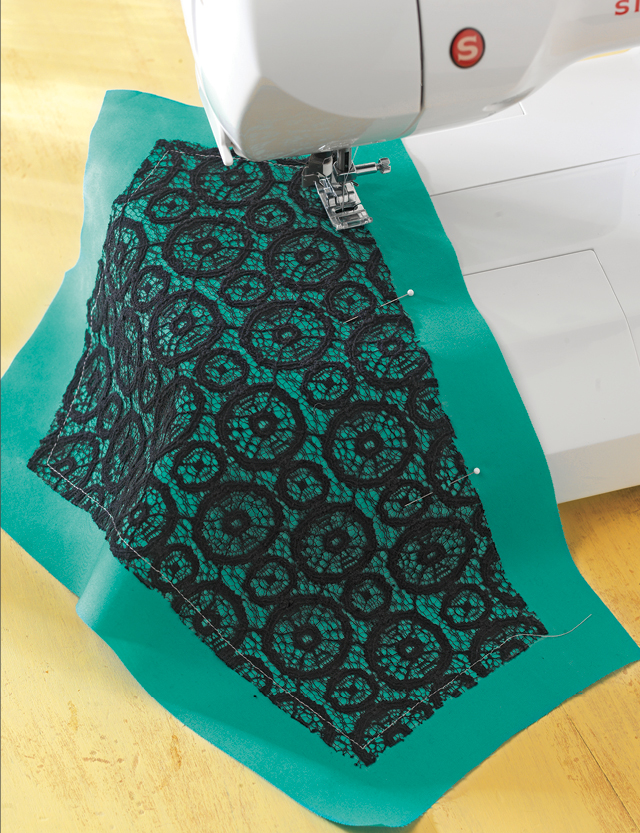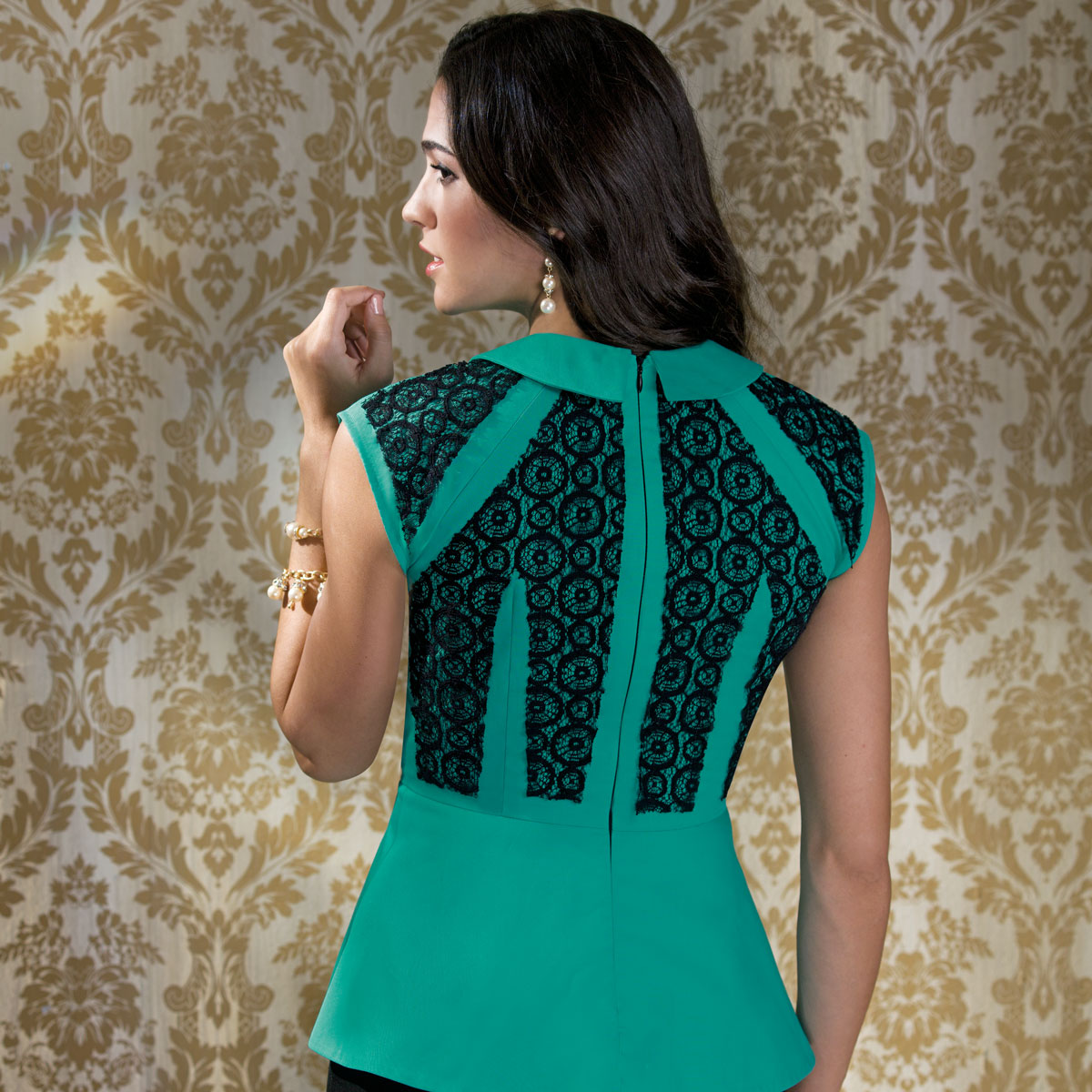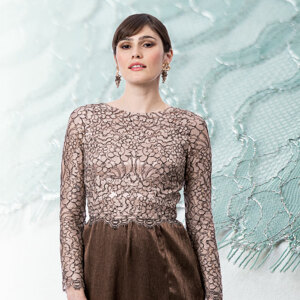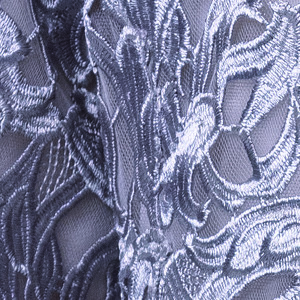Web Extra: Inset Lace Appliqué
Frame garment seams with inset lace appliqué panels
Lace continues to be one of the hottest runway trends. This inset lace appliqué technique is an innovative method to give garments an edgier appeal. One way to balance this ladylike fabric’s inherent sweetness with a bit of spice is to sew lace overlays onto a solid-colored garment with cut-away “reveals” around all the construction seams. This large-scale inset lace appliqué technique makes the lace appear to frame the garment’s seams, adding texture and a graphic element.
You can appliqué lace panels on any garment you choose, but it works best on simple, structured shapes. Here, we applied lace to the top from Simplicity SewStylish 1699 (out of print), a princess-seamed blouse with raglan sleeves, set-in waist, and flirty peplum. For another approach to this technique, check out a jacket featuring an abstract wool lace applied with the same technique. The key to inset lace appliqué is to cut the seam allowances plus a little extra off the lace panels before sewing them to the garment sections so they reveal the seams and darts.
You can cut the lace panel edges straight for an edgy interpretation, or cut them following the outlines of the inset lace appliqué motifs for a sophisticated and pretty effect.
|
|
|
Cut and Apply the Panels
Consider the garment’s structure when selecting a pattern for this treatment. A full, gathered skirt or bias-cut design won’t accept lace panel appliqués as successfully as a simple sheath dress, blazer, or structured blouse. Select a garment fabric and lace for the appliqué panels in complementary weights. The garment fabric should have enough body to support the lace; the cotton sateen and lightweight Venise lace used to make the peplum blouse shown are a perfect pairing. If you choose a lightweight garment fabric, don’t try to pair it with a heavier lace. Choose lace with medium to large motifs with lots of open space so that the garment fabric shows through. Solid-colored fabrics keep the look chic and restrained, but fabric with a simple print, such as a stripe or dot, could lend a dramatic pattern to the overall effect.
|
Shopping List
|
1. Cut the garment sections from fabric (and lining, if applicable). From the lace, cut the garment sections to which you’ll apply the overlay.

2. Spread the garment sections that will receive the lace overlays on a flat surface. Play with the lace panel placement on the garment until you like the effect. Decide whether to trim the panel edges to the shape of its motifs or to cut them straight. Pin the panels to the garment sections; place the pins outside the seam allowances.

3. Trim the lace panels. Measure 1 inch to 1-1⁄4 inches from the panel edges (the seam allowance plus 1⁄2 inch to 3⁄4 inch) and mark cutting lines with tailor’s chalk. Trim off the excess lace, following the lines. Cut away any darts from the lace panels, and trim an additional 1⁄2 inch to 1 inch off the dart seamlines. This creates the reveals around the garment’s construction seams. Cut around the lace motif edges, if you wish, or cut the edges straight, as shown.

4. Spray-baste the lace to the fabric. Protect your work surface with a plastic sheet. Unpin and flip back the lace panels’ edge from the garment section it is pinned to and lightly spray temporary adhesive on the fabric’s right side. Carefully hand-press the lace panel back onto the garment section. Continue securing the lace panels in the same way, a portion at a time. Repin the panel, placing the pins perpendicular to the stitching line.

5. Sew the lace panels to the garment sections. Select thread that matches the lace. Using a short stitch length, stitch 1⁄4 inch to 1⁄2 inch from the lace panel’s edge. Sew slowly and follow the panel’s edge, whether you have shaped it to match the lace motifs or cut it straight.

6. Construct the garment according to the pattern instructions. It’s helpful to mark the garment’s seam allowances with tailor’s chalk to guide you as you sew. If your garment has darts, pay very close attention when you sew them.
Hot Tip: Design for your style. Are you restrained or extravagant? Apply a lace panel to only one or two areas of a garment, or splash it all over. Combine a few colors, or use just one.
Stephani L. Miller is a former special projects editor at Threads.






































Log in or create an account to post a comment.
Sign up Log in